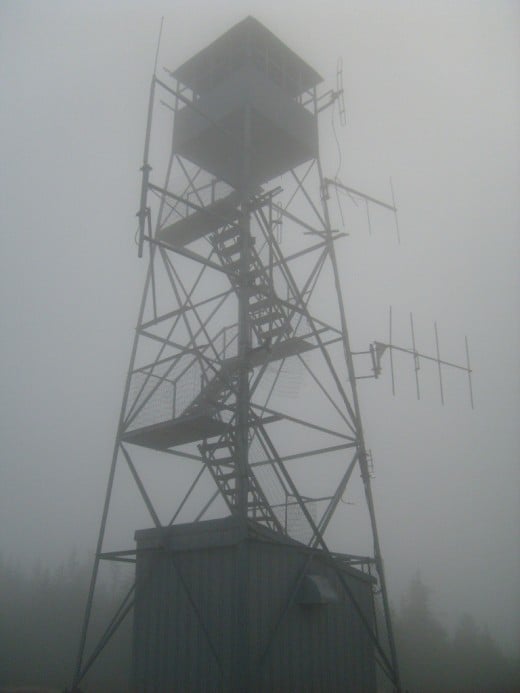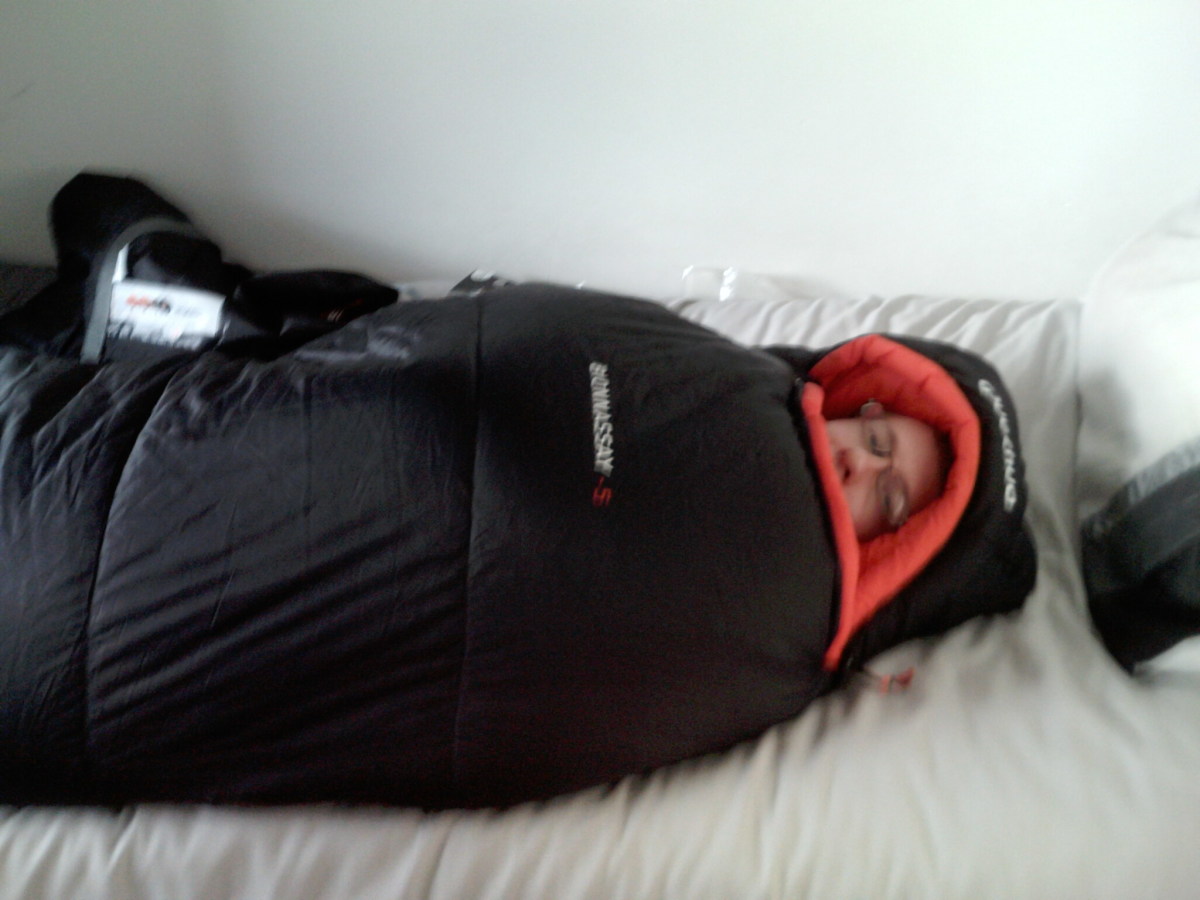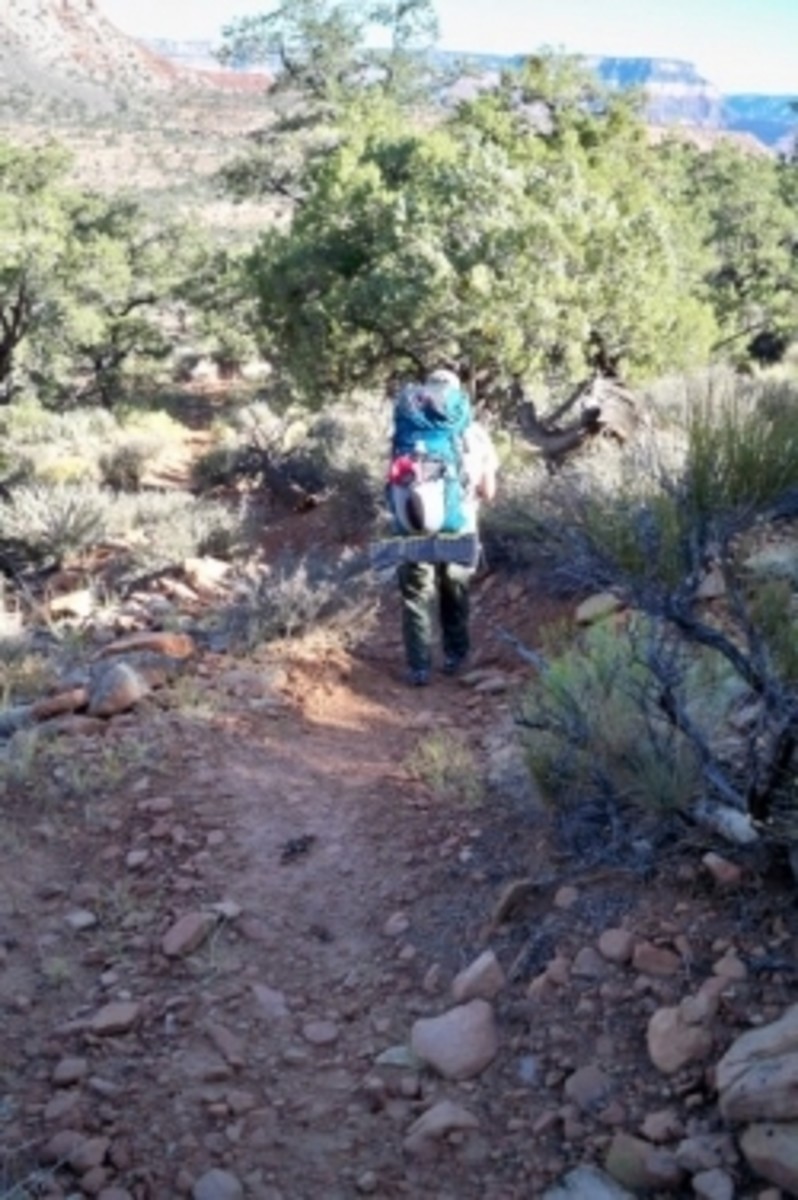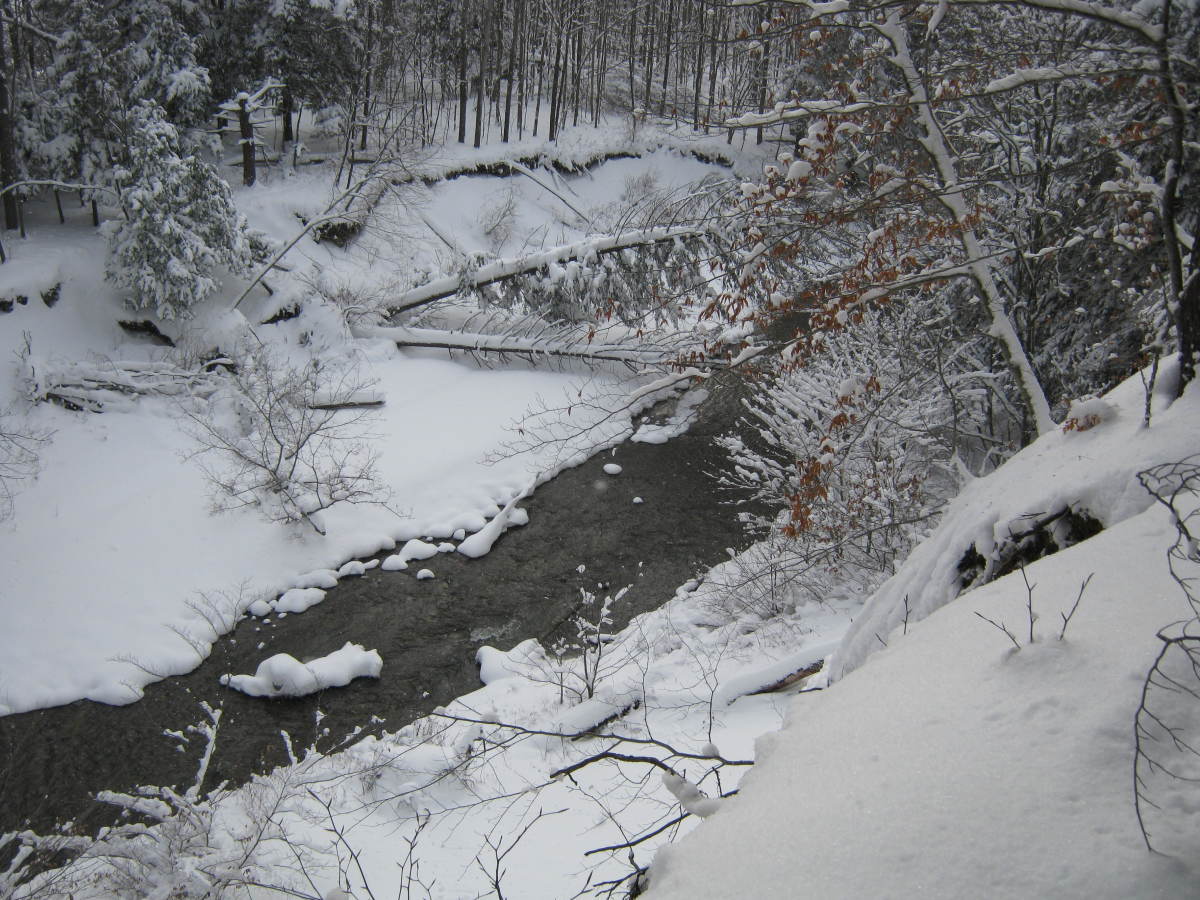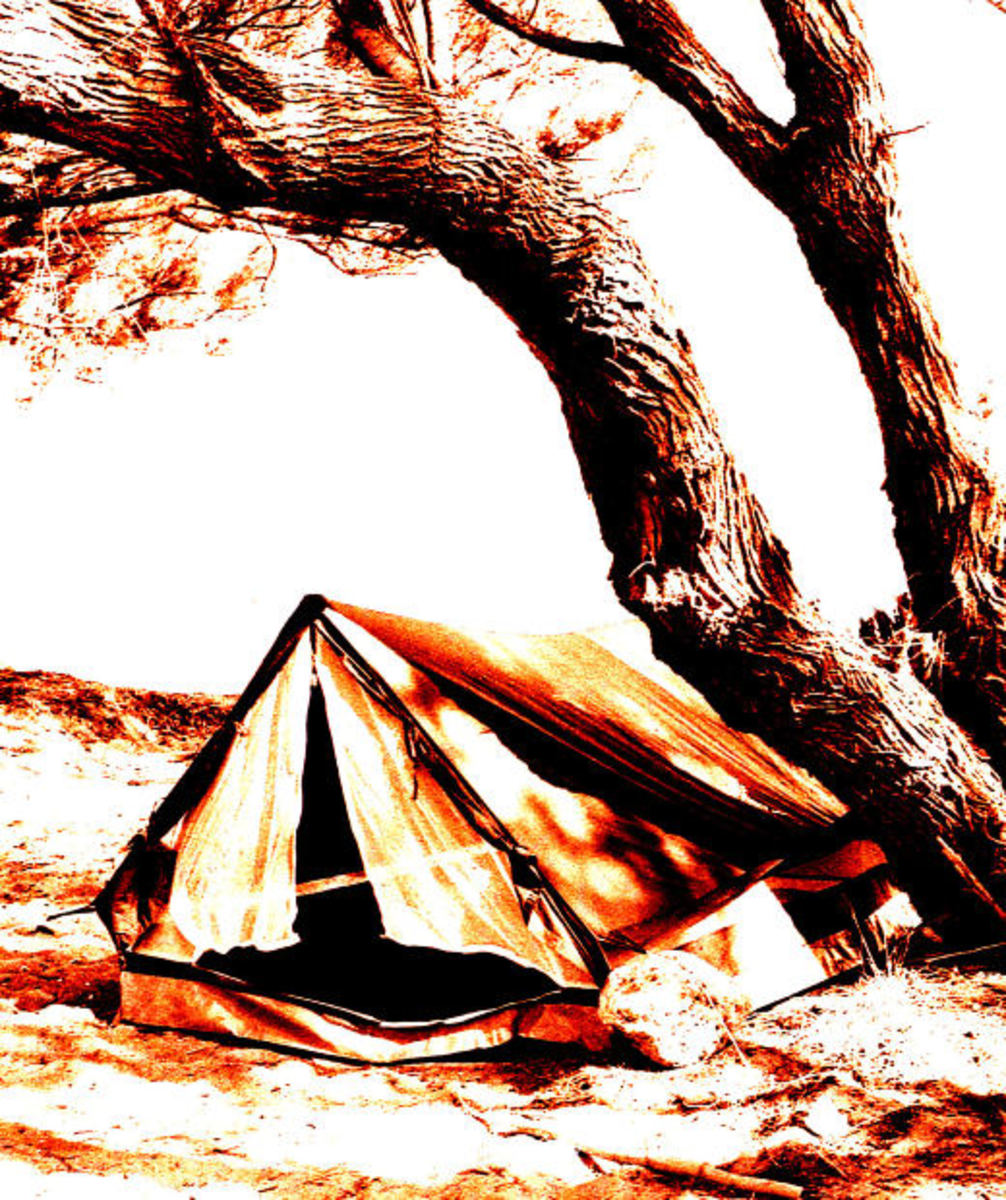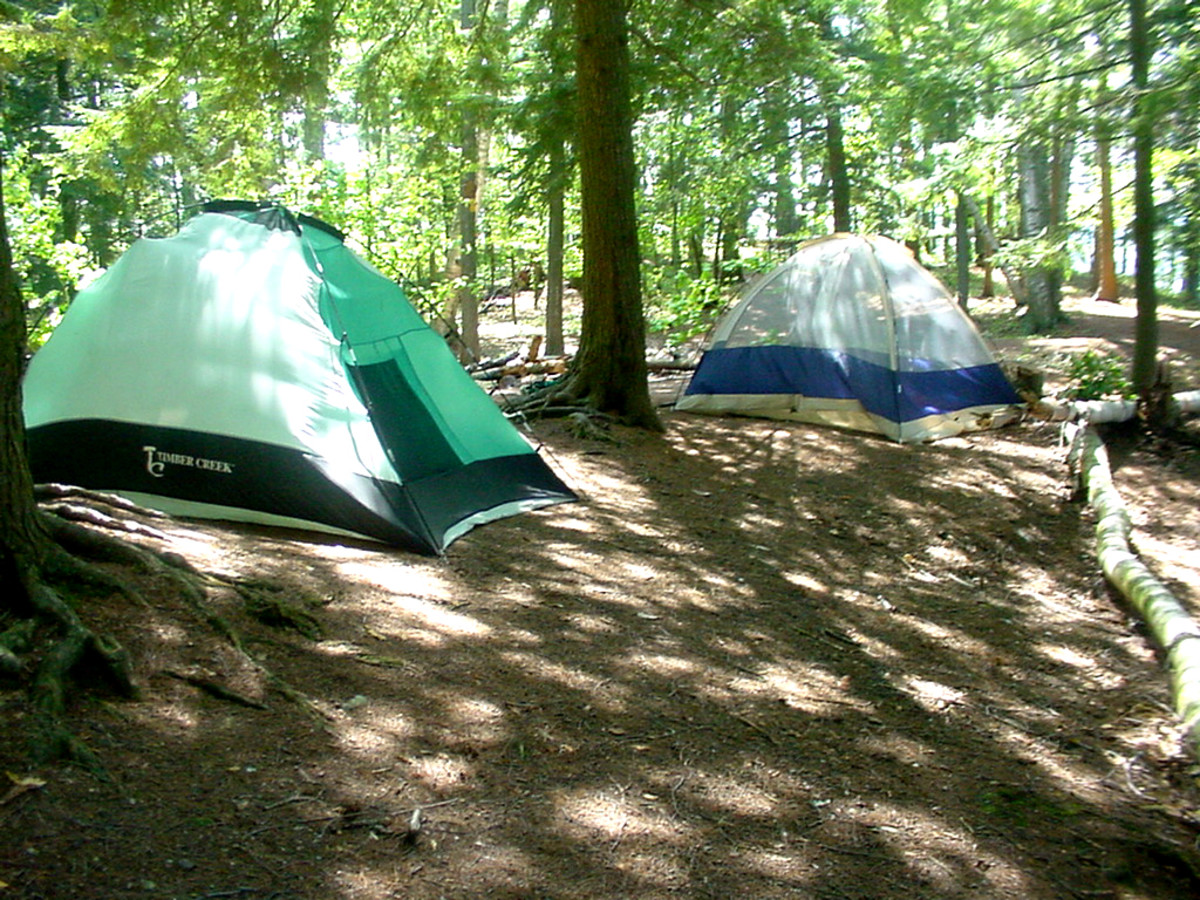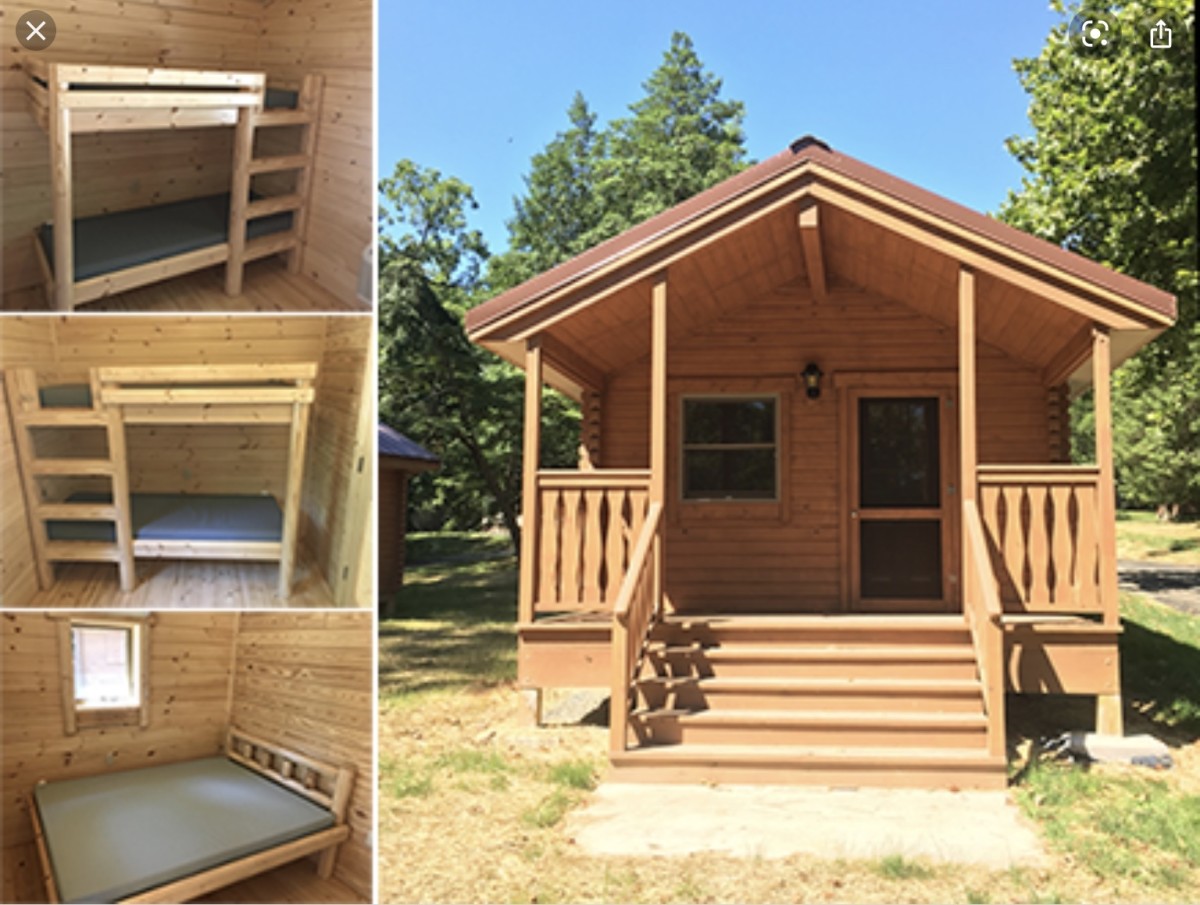Backpacking on a Budget: An Experiment
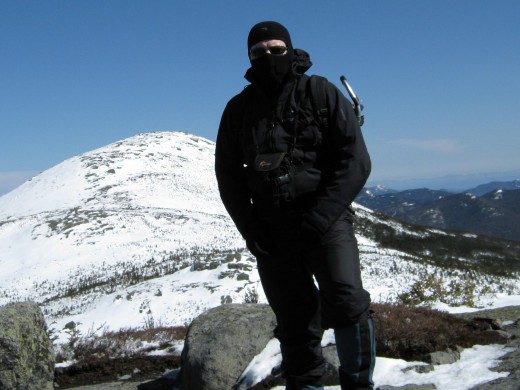
The Problem
Over the years I have amassed an enormous amount of backpacking and camping equipment. I wince when I need something from the gear closet and I think of the impending avalanche of backpacks, tents, boots, and more. Before trips, I agonize over which combination of gear to take and often don't decide until I am at the trailhead. I "like" more gear companies on Facebook than anything else and I regularly read their posts about the latest technology and newest gear. Yes, I am a gear junkie and I admit it.
Now, I am of the firm belief that quality equipment provides a better experience in the backcountry. Anyone who has spent the night in a leaky tent or a drafty sleeping bag can attest to this. As a SAR team member, I know that the right gear makes all the difference in a life and death situation. Most searches seem to be for people wearing bluejeans and venturing into a forest at dusk without a flashlight.
But perhaps I have become obsessed with gear ...
In Walden, Henry David Thoreau quips, "Most of the luxuries and many of the so-called comforts of life, are not only not indispensable, but positive hindrances to the elevation of mankind." Though we are familiar with Thoreau's great experiment of abandoning his village for a life of self-reliance and occasional solitude, do we forget about his spiritual journey? Thoreau does without, not to prove the physical benefits of a Spartan existence, but to transcend the barriers of culture and nature. Thoreau did not build himself a mansion on Walden Pond, but a simple cabin. For Thoreau, luxury is the illusion and clinging to it leads to an unfulfilled life full of inauthenticity. The question is as backpackers, do we carry mansions on our backs?
Am I overlooking part of the wilderness experience by focusing too much on the gear I carry? I started lightweight backpacking not only to have the ability to move more lightly and quickly, but to abandon the pressures of reproducing the world of 10,000 Things in the purity of the wilderness. I wonder how many lightweight fanatics cut the ice axe loops off their packs to save weight, but leave the label for all to see. Yes, leaving the portable espresso maker at home lowers my pack weight, but it allows me to avoid the noisy commotion of everyday life. The wilderness is extraordinary in its simplicity and beautiful in its dearth of expected action.
Besides a possible block to enlightenment, I wonder about how gear affects the social structure of hikers. As an experienced backpacker, I find myself scoffing at fellow outdoorsfolks wearing cotton t-shirts and sporting antiquated packs. As they walk by, their packs sway with a multitude of objects from sierra cups to egg-crate foam hanging on for dear life; I find myself evaluating who they are. Without speaking or exchanging ideas, I have a clear picture of who they are by what they carry. I brag that I can tell what country a person is from by what gear they have. I never considered myself prejudiced, but perhaps gear prejudice is a possibility.
Has backpacking become too exclusive? How can people experience backpacking when we erect barriers to it. Sure, you can go hiking, but you'll need to take out a small loan to do so. Outdoor recreation should offer solace from our troubled economy, but I fear its popularity will dwindle along with people's savings. Have we really conformed to the pressures of advertising agencies with their picturesque ads full of good looking people having a great time? It equates experience with the amount of money spent and I hope that isn't true.
Yes, we all remember that trip with the cold sleeping bag or the tent that leaked, but we survived. Those trips give us something to laugh about, even if we were miserable while doing it. Some of my best trips are the ones where I am hypothermic and hungry. Memories have the uncanny ability to ignore cold, dampness, and even pain. Perhaps in the end, high-quality gear makes our trips more enjoyable, but what if it doesn't? When trip planning, we always address the "who, what, where, and when;" seldom do we address the "why." Why do we go out there?
The Experiment
Break out the Bunsen burners, it is time for a good old fashion experiment.
In this experiment, I'll take a mid fall backpacking trip using newly acquired economically-priced gear. Like a novice hiker, I'll undergo this journey as someone who hasn't had years to accumulate and fine tune their equipment. All of this new-to-me gear, from boots to backpack, will be purchased with a strict budget of $125. What $125? Heck, I spend that on hiking socks every year.
I plan on collecting this gear over the next few weeks from a variety of sources, from thrift stores to internet auction sites. If I feel in the industrious mood, I may try making some equipment myself.
After assembling the gear and making any necessary adjustments, I'll post what I have learned here and include a complete gear list. Then I'll test the equipment on a short backpacking trip. I'm not sure where to take the trip, but I am contemplating the North Country Scenic Trail in Allegheny National Forest. To document my trip, I'll be bringing my regular canon camera. Because I made the rules for this experiment, I'll say that isn't cheating.
So, what do I hope to learn?
- Is the wilderness experience improved or degraded by the quality and or quantity of one's gear?
- Is it possible to go backpacking on a budget safely?
- Can someone outfit themselves for a backpacking adventure using limited resources?
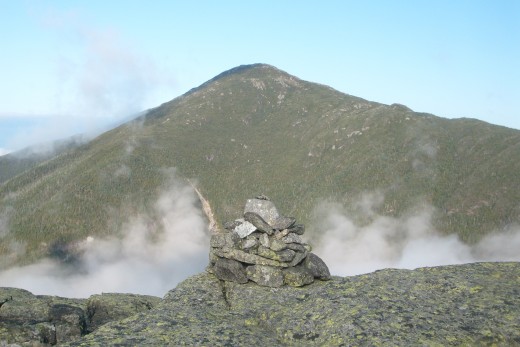
The Gear
As I collect economically-priced gear, I will publish it here:
CLOTHING / BOOTS:
- Synthetic wicking t-shirt at JC Penny: This shirt was usually $20.00, but I picked it up on clearance for $2.60. The Mountain Hardware shirts I usually wear retail for $30.00.
- Keen Red Rock low hiking boots: These boots usually retail for $110, but I picked them up off the clearance rack at DSW for $54.96. I was looking for a sturdy waterproof breathable wide fit shoe and I found a great deal on these. I already own the mid version of this boot and have been satisfied. I figured that the boots would be the most expensive part of my ensemble.
- Rain Gear: Unbranded poncho from an e-bay lot $2.00
- Socks: A package of two timberland synthetic hiking socks from BJs on clearance $3.99.
- Pants: Nylon pants found at Salvation Army $4.00.
- Insulation: Fleece pullover from Salvation Army $2.50.
SLEEPING/SHELTER EQUIPMENT:
- Sleeping Bag - Coleman 0-degree synthetic mummy sleeping bag $18.00 (supposedly used) off of eBay. I was very suspicious of picking up a used sleeping bag, but the description made it sound like it was in very good condition. If it was actually ever used, I'd be surprised. I was looking for a synthetic mummy bag with a cold rating for fall and I think I found it with this. It is heavy though, and tips the scales over five pounds - ugh. Well, it will make a good "car bag" afterwards.
- Pack - Coleman Exponent Teton: This pack retailed for around $150, but I picked up a barely used one for $20.99 (including shipping) on eBay. The pack fits me okay but it is kind of strange set up. It has a 4200 cu. in. capacity and is heavier than my other packs at five-pounds. The pack fits the Sleeping bag nicely.
- Shelter - I made my own lightweight tarp tent out of two 5x9 blue tarps, glue, duct tape, and a little bit of ingenuity. The cost of the tarps: .97 cents each on sale at Valu hardware store. When I post some pictures, you'll be able to see this.
- Sleeping pad - Military ensolite pad - picked up from military surplus store for 7.99. I used these pads while I was in the Army and found them to be warm for the weight and extremely durable.
Cooking and Eating Gear:
- Stove: Homemade "super cat" alcohol stove. I made this simple stove from an old cat food can and simple tools I had at my disposal. Yes, this stove is slow as it takes about 8-minutes in freezing temperatures to boil two cups of water, but it works, is very lightweight (about 1.5 ounces), and was very cheap.
- Pot: Military canteen cup $2.00. I found this terrific find at an antique store. Again, this was something I used in the Army, so I knew it worked.
- Spoon: Plastic "disposable" spoon scrounged from a dispenser at a local eatery.
- Water Bottles: Two used gatorade containers. On the Appalachian Trail, I became rather concerned about potential bacteria in my Nalgenes. Therefore, I would use disposable drink bottles for about a week and then recycle them when I got to town.
Assorted Essentials:
- Knife: Swiss Army Tinker: Though this knife retails for around $30, I was able to pick a used one up on ebay in a miscellaneous lot for about $3.00.
- Compass: Unbranded orienteering style compass that I received with the knife above and the fire starters below off e-bay. Though I figured that I paid about $1.50 for the compass, when I compared it to my more expensive Silvas, it lacked accuracy. The compass is consistently about 8 degrees West - it would be good to remember that in case I had to do some serious orienteering.
- Fire Starters: Because I had a stove, I wasn't planning on starting a fire, but the ability to do so is a survival necessity. I had just planned on making some before heading out, but I received an unopened package of coghlans starters in the lot above and at what I figured to be $1.00 I couldn't go wrong.
- Lighter: Avoid the cheap lighters at the dollar store and splurge for a better Bic. I picked up a two pack for $1.50 at the supermarket.
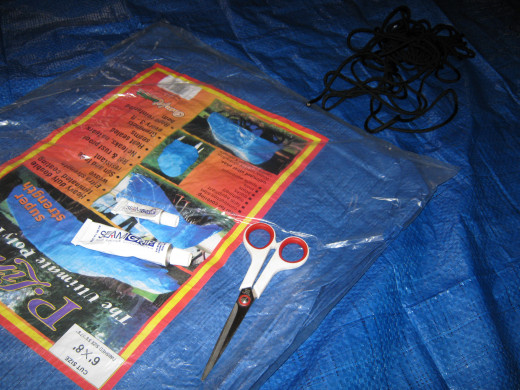
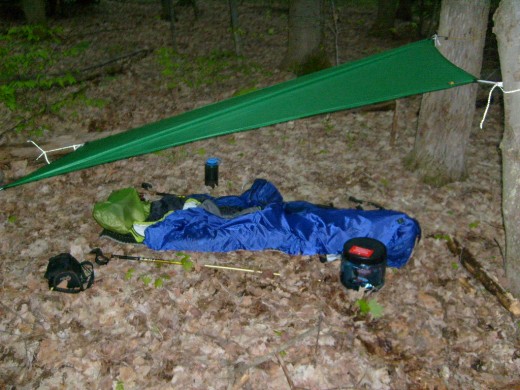
The Results
After taking the trip with this gear, I will post a detailed trip report here.
NOTE: Sorry about the wait. The trip went fine, I just haven't gotten around to writing it up just yet.
How much money have you invested in backpacking / camping equipment?
What is the easiest type of gear to save money on?
GEAR POLLS
What one piece of gear is worth spending money on? Please expand in comments section.
What is the best way to save money on outdoor gear?
